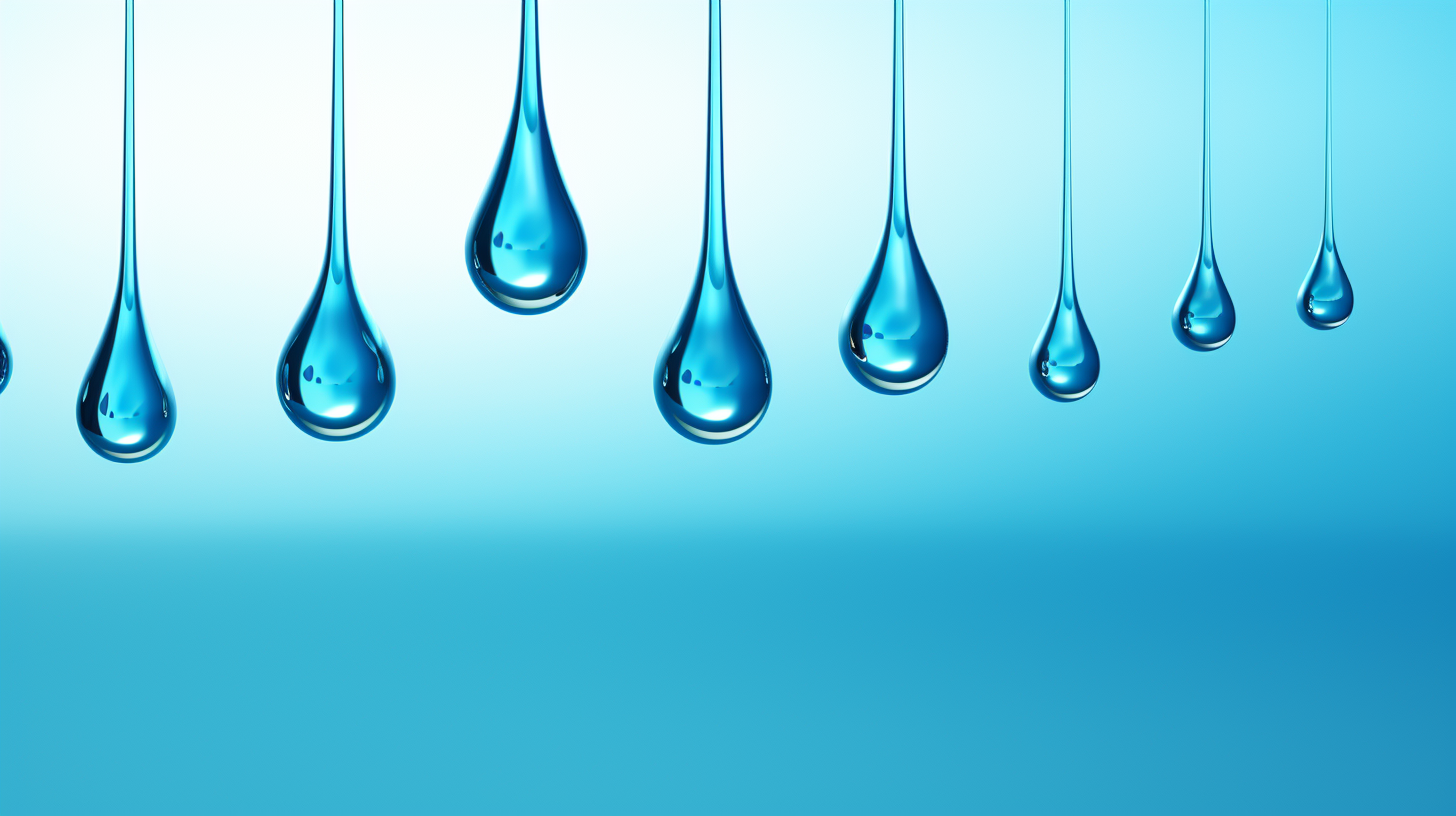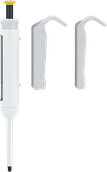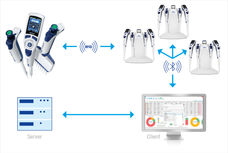Complete filling of batches of nanopipettes
Advertisement
nanopipettes, in which a nanoscale channel is filled with a solution, are used in all kinds of nanotechnology applications, including scanning-probe microscopy. Bringing a solution into a nanopipette with a pore diameter below 10 nanometer is challenging, however, since capillary forces prevent the complete filling of a sub-10-nm nanopipette pore with a liquid. Now, Shinji Watanabe and colleagues from Kanazawa University have found a simple but efficient way for filling nanopipettes. The researchers show that the 'air bubble' that typically remains near the pipette's pore end can be removed by applying a temperature gradient along the pipette.

Putting a batch of nanopipettes on a hot plate induces a thermal gradient, which enables complete filling of the pipettes with a solution. Adapted with permission from Linhao Sun, Kazuki Shigyou, Toshio Ando, and Shinji Watanabe. Thermally Driven Approach To Fill Sub-10-nm Pipettes with Batch Production, Anal. Chem. 91, 14080-14084 (2019). Copyright 2019 American Chemical Society.
Kanazawa University
The scientists investigated their 'thermally-driven method' to a batch of 94 pipettes, aligned length-wise next to each other, all with a pore diameter of around 10 nm. The pipettes were put on a metal plate kept at a temperature of 80 °C, with their tips protruding from the plate, resulting in a temperature gradient.
Time-lapsed optical microscopy images of the filling process of the nanopipettes showed that after 1200 seconds, the tips are completely filled with solution, and that air bubbles are driven out of the pipettes.
In order to double-check that the pipettes were indeed bubble-free, Watanabe and colleagues performed so-called I-V measurements. Every pipette was filled with a solution of potassium chloride (KCl), which is conducting. Both pipette ends were then contacted with electrodes. If an electrical current runs between the ends -- specifically, if the pipette has an electrical conductivity below a few GΩ-- then filling with the solution is complete. The resesarchers observed electrical currents and therefore filling for the whole batch of pipettes.
The scientists also performed transmission electron microscopy (TEM) measurments of pipettes with pore diameters below 10 nm. Although the thermally-driven method leads to good electrical contacts, particle-like structures were observed inside the tips of the nanopipettes, demonstrating that (quoting the researchers) "TEM observation without inducing pipette deformation is important for accurately determining the characteristics of sub-10-nm nanopipettes."
Watanabe and colleagues concluded that their method is very practical and easy to introduce in nanopipette frabrication and that their study "will provide a significant contribution to various fields of nanoscience using nanopipettes.
Original publication
Other news from the department science
These products might interest you
Most read news
More news from our other portals
See the theme worlds for related content
Topic world Pipetting
Pipetting is one of the most basic yet critical techniques in the laboratory. It enables the precise and controlled transfer of liquids, which is essential for accurate measurements and reliable results. Whether in DNA analysis, cell culture or biochemical assays, correct pipetting significantly influences the quality of the results.

Topic world Pipetting
Pipetting is one of the most basic yet critical techniques in the laboratory. It enables the precise and controlled transfer of liquids, which is essential for accurate measurements and reliable results. Whether in DNA analysis, cell culture or biochemical assays, correct pipetting significantly influences the quality of the results.































































